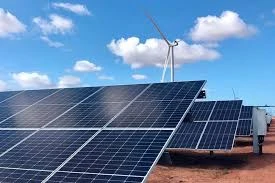Winter Solar Panel Performance and Efficiency Considerations for Optimal Energy Harvesting
Solar Panel Efficiency in Winter Understanding the Dynamics
As winter approaches and the days grow shorter, many individuals and businesses begin to question the effectiveness of solar panels during this season. Concerns arise about lower temperatures, shorter daylight hours, and the potential hindrance of snow accumulation on panels. However, understanding the dynamics of solar panel efficiency in winter can help one appreciate its continued viability as a renewable energy source.
The Science of Solar Panel Efficiency
Solar panels work by converting sunlight into electricity through photovoltaic cells. The efficiency of these cells is influenced by several factors, including temperature, light intensity, and environmental conditions. Interestingly, solar panels can actually perform better in colder temperatures than in extremely hot conditions. This is largely due to the fact that high temperatures can cause the cells to generate less electricity, while cooler temperatures can enhance their performance.
In winter, while daylight hours are shorter and the sun may not be as intense, solar panels can still generate a significant amount of energy, especially during sunny winter days. Depending on geographic location, solar panels can yield anywhere from 30% to 50% of their peak efficiency in winter months. For many regions, this still translates to a considerable amount of energy production, enough to meet a significant portion of energy needs.
Impact of Snow and Ice
One of the primary concerns during winter is the accumulation of snow and ice on solar panels. Snow can cover the panels, blocking sunlight and reducing energy production. However, most solar panels are designed with a slight slope, which allows snow to slide off naturally as it melts. Additionally, solar panels are made from materials that can absorb sunlight, even through thin layers of snow or frost. In some cases, the darker surface of the panels can actually help to melt snow faster, allowing sunlight to reach the cells and enhance energy production.
solar panel efficiency in winter

Regular maintenance, such as removing heavy snow build-up when necessary, can further ensure that solar panels operate efficiently throughout the winter months. Moreover, it’s essential to consider proper installation; panels should be positioned at angles optimized for snow shedding. Installation company professionals often take local weather patterns into account to determine the best installation angle.
Location Matters
The efficiency of solar panels in winter can vary greatly depending on geographic location. Areas that receive abundant sunshine during winter, such as those at lower latitudes or regions with clear skies, can enjoy relatively high energy output. Conversely, regions that experience prolonged periods of overcast skies will see a reduction in energy production, regardless of the season. Thus, understanding local weather patterns and sunlight availability is crucial when assessing the potential efficiency of solar panels in the winter months.
Maximizing Efficiency During Winter
To maximize solar panel efficiency during winter, homeowners and businesses can take several proactive measures. First, regular maintenance checks are essential; cleaning panels to remove debris, dirt, or dust buildup will enhance their ability to capture sunlight. Second, installing solar trackers, which adjust the angle of the panels to follow the sun throughout the day, can improve energy collection during winter. Furthermore, considering battery storage systems enables users to store excess energy on sunny winter days for use during cloudy or snow-covered periods.
Conclusion
In summary, solar panels remain a viable and effective energy source during winter months. While there are challenges presented by lower temperatures and potential snow accumulation, the efficiency of solar panels can still be robust. By understanding the science behind solar energy production, implementing proper maintenance, and considering local environmental factors, users can continue to harness the benefits of solar energy year-round. Investing in solar technology not only contributes to a sustainable future but also provides energy independence in any season, including the coldest months of the year. As societies continue to prioritize renewable energy, recognizing the effectiveness of solar energy in winter will be key to successful energy strategies.
-
Navigating Off Grid Solar Inverter: From Use Cases to Trusted PartnersNewsAug.05,2025
-
Solar Edge String Inverter: A Wholesaler’s Guide to Inverter Technology SelectionNewsAug.05,2025
-
Microinverters: Revolutionizing Solar Energy UseNewsAug.05,2025
-
Future of Monocrystalline Solar Panel Efficiency: Latest Technological AdvancesNewsAug.05,2025
-
Solar Panels for House: A Complete Guide to Residential Solar EnergyNewsAug.05,2025
-
Panel Bifacial Performance in Snow and Low-Light ConditionsNewsAug.05,2025







